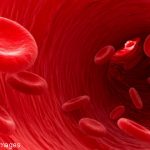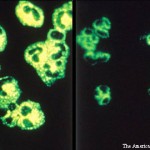 BALTIMORE—2022 was an exciting year in the field of vasculitis, not least of all because the ACR and EULAR released classification criteria for several forms. This development came just one year after the release of ACR/Vasculitis Foundation (VF) guidelines on the management of a number of vasculitides. With so much new information to be absorbed, attendees welcomed the Updates on Vasculitis session at the 19th Annual Johns Hopkins Advances in the Diagnosis and Treatment of Rheumatic Diseases Symposium.
BALTIMORE—2022 was an exciting year in the field of vasculitis, not least of all because the ACR and EULAR released classification criteria for several forms. This development came just one year after the release of ACR/Vasculitis Foundation (VF) guidelines on the management of a number of vasculitides. With so much new information to be absorbed, attendees welcomed the Updates on Vasculitis session at the 19th Annual Johns Hopkins Advances in the Diagnosis and Treatment of Rheumatic Diseases Symposium.
The presentation was given by Peter Merkel, MD, MPH, chief, Division of Rheumatology, University of Pennsylvania, Philadelphia, and began with a discussion of the 2022 classification criteria. This effort represents the first update in more than 30 years and took over a decade to complete.
Prospective data were collected from about 7,000 patients at more than 100 international sites, representing the largest ever research project in vasculitis. The initiative included information on anti-neutrophil cytoplasmic antibodies (ANCA) and the use of imaging modalities, such as computed tomography angiography (CTA), magnetic resonance angiography (MRA), positron emission tomography (PET) and ultrasound, which were not part of the original 1990 ACR classification criteria.

Dr. Merkel
Dr. Merkel noted these criteria are intended to be used for research purposes and not for diagnosis.
In terms of clinical practice, Dr. Merkel explained that the 2021 ACR/VF guidelines for the management of the vasculitides are very helpful in providing evidence-based recommendations.
AAV
Next, Dr. Merkel summarized standard of care in the treatment of ANCA-associated vasculitis (AAV). For non-severe AAV, meaning disease that is not organ or life threatening, the remission-induction phase—typically lasting three to six months—involves treatment with glucocorticoids and either methotrexate or rituximab. Thereafter, treatment for remission maintenance may last anywhere from as little as six months to indefinite therapy, and such treatment often involves continuation of the induction agent (i.e., methotrexate or rituximab), if it was effective.
Induction therapy for severe AAV, which involves organ- or life-threatening disease and represents the majority of new disease presentations, is more complex and includes consideration of cyclophosphamide, avacopan and plasma exchange.
Effective therapy for maintenance of remission in AAV depends on interpretation of landmark trials in this space. One such study was the MAINRITSAN-1 trial, which found that 500 mg of rituximab every six months is more effective than 2 mg/kg/day of azathioprine for remission maintenance in AAV.1 Dr. Merkel pointed out a number of questions that remain, including what the effects of a higher dose of rituximab would have been and what the results would have been if azathioprine had not been tapered from the 2 mg/kg/day dose after one year.

